
Safety
Scope & Guideline
Leading the way in safety research and knowledge sharing.
Introduction
Aims and Scopes
- Pharmacovigilance Methodologies:
The journal emphasizes innovative methodologies in pharmacovigilance, including signal detection, disproportionality analysis, and the use of artificial intelligence and machine learning in analyzing adverse event data. - Drug Safety in Special Populations:
A core focus is the safety of drugs in vulnerable populations such as pregnant women, children, and the elderly, addressing specific risks and pharmacological considerations unique to these groups. - Real-World Evidence and Data Utilization:
The journal promotes the use of real-world data and observational studies to evaluate drug safety, efficacy, and the impact of medications on diverse populations. - Regulatory and Policy Frameworks:
Research published often examines the implications of regulatory changes, risk communication, and the effectiveness of risk minimization strategies in ensuring drug safety. - Emerging Therapies and Vaccines:
The journal explores the safety profiles of novel therapeutics and vaccines, particularly in the context of recent global health challenges, such as the COVID-19 pandemic. - Pharmacogenomics and Personalized Medicine:
There is a growing interest in the intersection of pharmacogenomics and pharmacovigilance, focusing on how genetic factors influence drug safety and efficacy.
Trending and Emerging
- Artificial Intelligence and Machine Learning:
There is a significant increase in research exploring the application of AI and machine learning for drug safety signal detection and adverse event reporting, highlighting the transformative potential of these technologies. - Patient-Centered Pharmacovigilance:
Emerging themes focus on patient involvement in pharmacovigilance processes, emphasizing the importance of patient-reported outcomes and experiences in enhancing drug safety monitoring. - Integration of Real-World Data:
The use of real-world data sources, including electronic health records and social media, is trending, enabling more comprehensive analyses of drug safety in diverse populations. - Safety of Biologics and Novel Therapies:
The journal is increasingly publishing studies on the safety profiles of biologics and novel therapies, particularly in the context of personalized medicine and complex treatment regimens. - Global Pharmacovigilance Strategies:
Research on collaborative global strategies for pharmacovigilance is emerging, reflecting the need for coordinated efforts to address drug safety on an international scale. - Risk Communication and Management:
There is a growing focus on effective risk communication strategies and their role in managing public perceptions of drug safety, particularly during health crises like the COVID-19 pandemic.
Declining or Waning
- Traditional Pharmacovigilance Approaches:
There is a noticeable decrease in studies solely focused on traditional pharmacovigilance methods, as newer technologies and data analysis techniques gain traction. - Single-Country Studies:
Research that focuses exclusively on drug safety within a single country is less common, with a shift towards multinational studies that provide a broader perspective on drug safety. - Generalized Reporting Practices:
Publications that discuss generalized reporting practices without specific recommendations or frameworks are becoming less frequent, as the field moves towards more targeted and evidence-based approaches. - Historical Drug Safety Evaluations:
There is a waning interest in retrospective evaluations of older drugs that do not incorporate current methodologies or technologies, as the field prioritizes research that can inform modern clinical practices. - Pharmacovigilance in Isolation:
Research focusing on pharmacovigilance in isolation from other healthcare systems and processes is declining, with a trend towards integrated approaches that consider broader healthcare implications.
Similar Journals
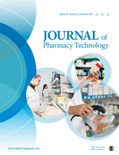
JOURNAL OF PHARMACY TECHNOLOGY
Driving excellence in pharmacy technology research and application.JOURNAL OF PHARMACY TECHNOLOGY is a premier publication in the field of Pharmaceutical Science, established in 1989 and published by SAGE PUBLICATIONS INC. This journal serves as an essential resource for professionals, researchers, and students dedicated to the advancements in pharmacy technology and the application of innovative solutions in pharmaceutical practices. With an ISSN of 8755-1225 and an E-ISSN of 1549-4810, the journal provides a rigorous peer-reviewed platform for disseminating cutting-edge research and case studies. As of 2023, it is ranked Q3 in the Scopus categories of Pharmacology, Toxicology, and Pharmaceutics, highlighting its relevance in the field. Although it currently does not offer an Open Access option, JOURNAL OF PHARMACY TECHNOLOGY aims to remain a critical avenue for scholarly communication and knowledge dissemination among practitioners in the pharmaceutical sector, ensuring they stay informed of the latest trends and findings that impact their work.

Drug Healthcare and Patient Safety
Prioritizing patient safety through impactful research.Drug Healthcare and Patient Safety is a premier Open Access journal, published by DOVE MEDICAL PRESS LTD since 2009, dedicated to advancing the understanding and practices surrounding medication safety and healthcare delivery. With its ISSN 1179-1365 and E-ISSN matching, this New Zealand-based journal not only fosters global discourse but also prioritizes the dissemination of research that intersects both health policy and pharmacology. Categorized as Q2 in Health Policy and Q3 in Pharmacology for the year 2023, it occupies a notable position within the academic community, as reflected by its Scopus rankings, which place it in the 66th and 45th percentiles of its respective categories. Drug Healthcare and Patient Safety aims to provide a platform for researchers, practitioners, and students to share innovative findings, promote safe medication practices, and explore the implications of health policy on patient outcomes. As an Open Access journal, it ensures that vital research is accessible to a wider audience, making significant contributions to the ongoing dialogue in the fields of healthcare and pharmacovigilance.

DRUG SAFETY
Pioneering Insights for Safer MedicationsDRUG SAFETY is a premier academic journal published by ADIS INT LTD, dedicated to the critical field of pharmacology and toxicology. Since its inception in 1990, the journal has established itself as a vital resource for researchers, clinicians, and healthcare professionals by providing high-quality, peer-reviewed articles that inform and advance the understanding of drug safety and efficacy. With an impressive impact factor and its current Q1 categorization in Pharmacology across various sub-disciplines, DRUG SAFETY is ranked among the top journals in its field, reflecting its commitment to excellence in scientific research. The journal features a diverse range of studies, reviews, and case reports addressing contemporary issues in drug safety, making it an invaluable tool for academia and industry alike. Although it is not an open-access journal, the content is accessible to subscribers and institutions, ensuring that essential findings in drug safety reach the widest audience possible. As the field evolves, DRUG SAFETY remains at the forefront, driving innovation and improving regulatory practices worldwide.
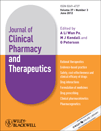
JOURNAL OF CLINICAL PHARMACY AND THERAPEUTICS
Bridging pharmacology and therapy for better patient outcomes.JOURNAL OF CLINICAL PHARMACY AND THERAPEUTICS, an esteemed publication in the field of pharmacology, is published by Wiley-Hindawi and has been at the forefront of clinical research since its inception in 1976. Operating primarily from the United Kingdom, this journal features a diverse array of articles that encompass both fundamental and practical aspects of clinical pharmacy, thereby supporting the advancement of therapeutic practices. With an ISSN of 0269-4727 and an E-ISSN of 1365-2710, it is indexed in key databases and holds respectable ranks within its categories; achieving Q3 in Pharmacology and Q2 in Medical Pharmacology in the latest quartile rankings. Its Scopus ranking reflects both its quality and relevance, being positioned in the 55th percentile for medical pharmacology and the 45th for pharmacology, toxicology, and pharmaceutics. Although it does not currently operate under an Open Access model, the journal's extensive readership and rigorous peer-review process ensure that the latest research reaches practitioners and academics alike. With a commitment to bridging the gap between pharmacological science and clinical practice, the JOURNAL OF CLINICAL PHARMACY AND THERAPEUTICS remains a critical resource for professionals striving to enhance patient outcomes through informed medication management.
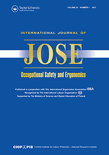
International Journal of Occupational Safety and Ergonomics
Empowering professionals with cutting-edge safety research.International Journal of Occupational Safety and Ergonomics, ISSN 1080-3548, is a leading multidisciplinary journal published by TAYLOR & FRANCIS LTD with a dedicated focus on advancing research and practices in occupational safety and ergonomics. Since its inception in 1995, this journal has provided a platform for the dissemination of innovative studies that address critical issues in public health, environmental and occupational health, and safety research. Recognized for its rigorous peer-review process, the journal holds a respectable position in the Q2 quartile rankings across multiple categories as of 2023, reflecting its impact and relevance within the academic community. It ranks 24th out of 109 in Safety Research, 198th out of 665 in Public Health, and 66th out of 207 in Safety, Risk, Reliability and Quality, showcasing its influence in these essential fields. The journal's broad scope aims to bridge gaps between research and application, ensuring that findings contribute to effective safety practices in various industries. While not an Open Access journal, the International Journal of Occupational Safety and Ergonomics remains an invaluable resource for researchers, professionals, and students seeking to stay informed about the evolving landscape of occupational safety. Its headquarters are located in Abingdon, England, serving as a conduit for scholarly communication in this vital area of study.
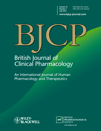
BRITISH JOURNAL OF CLINICAL PHARMACOLOGY
Exploring Innovations in Pharmacological ScienceBritish Journal of Clinical Pharmacology, published by Wiley, is a premier peer-reviewed journal that has been at the forefront of pharmacology research since its inception in 1974. Renowned for its high academic rigor, it stands out with an impressive impact factor that places it in the Q1 quartile within both the general pharmacology and medical pharmacology categories. With a Scopus ranking reflecting its esteemed status—ranked #68 out of 272 in medical pharmacology and #109 out of 313 in pharmacology, toxicology, and pharmaceutics—the journal serves as a critical resource for researchers, clinicians, and students who are keen to explore innovations and advancements in drug therapy. The journal's scope encompasses a wide array of topics, including clinical trials, drug safety, and pharmacokinetics, making it an essential platform for disseminating cutting-edge pharmacological findings. Although it does not offer open access, the stringent selection of articles ensures that only the highest-quality research is published, further contributing to the ongoing discourse in clinical pharmacology.
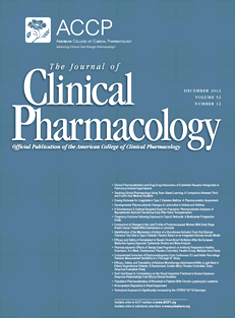
JOURNAL OF CLINICAL PHARMACOLOGY
Transforming Clinical Practice with Cutting-Edge ResearchWelcome to the Journal of Clinical Pharmacology, an esteemed publication in the field of pharmacology and medical pharmacology, published by Wiley. Since its inception in 1973, this journal has been at the forefront of disseminating innovative research findings and comprehensive reviews that enhance our understanding of drug therapies and their clinical applications. With an impact factor that reflects its strong reputation and a Scopus ranking placing it in the 64th percentile among 272 journals in medical pharmacology, the journal stands as a critical resource for researchers, healthcare professionals, and students alike. Although currently not an Open Access journal, it provides invaluable insights into therapeutic drug use and safety, the pharmacokinetics of drugs, and the development of new therapeutic strategies. The journal's commitment to advancing the field through high-quality, peer-reviewed articles ensures it remains a vital asset in the continuously evolving landscape of clinical pharmacology.

JOURNAL OF PHARMACY AND PHARMACEUTICAL SCIENCES
Fostering collaboration in critical pharmaceutical research.Welcome to the JOURNAL OF PHARMACY AND PHARMACEUTICAL SCIENCES, a prestigious open access journal published by FRONTIERS MEDIA SA since 2008, dedicated to advancing research in the fields of pharmacy and pharmaceutical sciences. With its strong rooting in Canada, this journal has established itself within the academic community by consistently delivering high-quality studies and insights, as evidenced by its respectable Q2 ranking in both Medicine (miscellaneous) and Pharmaceutical Science categories for 2023, along with a notable 77th percentile ranking in Pharmaceutical Science on Scopus. Spanning over two decades of publication from 1998 to 2024, the journal focuses on critical research areas including pharmacology, toxicology, and drug development. By providing open access to its articles, the journal ensures that vital scientific information is readily available to researchers, professionals, and students alike, fostering collaboration and innovation within these essential disciplines. We invite you to explore the latest findings and contribute to the ongoing dialogue in pharmaceutical research through this essential platform.
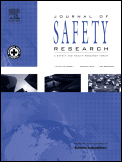
JOURNAL OF SAFETY RESEARCH
Elevating standards in safety, reliability, and quality.The JOURNAL OF SAFETY RESEARCH, published by Pergamon-Elsevier Science Ltd, stands as a premier platform for scholarly discourse within the domain of safety, risk, reliability, and quality. With an esteemed impact factor and a strong ranking of #38 out of 207 in its category as per Scopus, this journal maintains a distinguished Q1 quartile status, reflecting its influence and significance in advancing safety research since its inception in 1969. Researchers, practitioners, and students alike will find a wealth of knowledge here as the journal explores critical aspects of safety in various contexts, highlighting innovative strategies and empirical findings that contribute to improved safety outcomes globally. Though it operates under a traditional access format, the journal’s extensive repository of articles ensures that vital information remains accessible to its readership. The JOURNAL OF SAFETY RESEARCH is not only a cornerstone for those within the safety engineering field, but also a vital resource for professionals seeking to enhance their understanding of risk management and quality assurance methodologies.
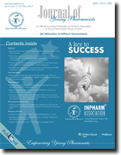
Journal of Young Pharmacists
Fostering Excellence in Pharmacology and ToxicologyJournal of Young Pharmacists is a distinguished peer-reviewed journal published by INPHARM ASSOCIATION in collaboration with PHCOG NET. With an ISSN of 0975-1483 and an E-ISSN of 0975-1505, this journal serves as a vital platform for disseminating pioneering research in the field of pharmacology and toxicology. Although coverage in Scopus was discontinued in 2018, the journal continues to be important in educating future pharmacists and advancing the discipline, evident from its ranking in the 29th percentile among general pharmacology journals. The Journal of Young Pharmacists seeks to bridge the gap between theoretical knowledge and practical application, encouraging young researchers, professionals, and students to contribute their insights and findings. The journal emphasizes innovative approaches and contemporary issues relevant to the pharmaceutical sciences, making it an invaluable resource for anyone involved in this dynamic field.